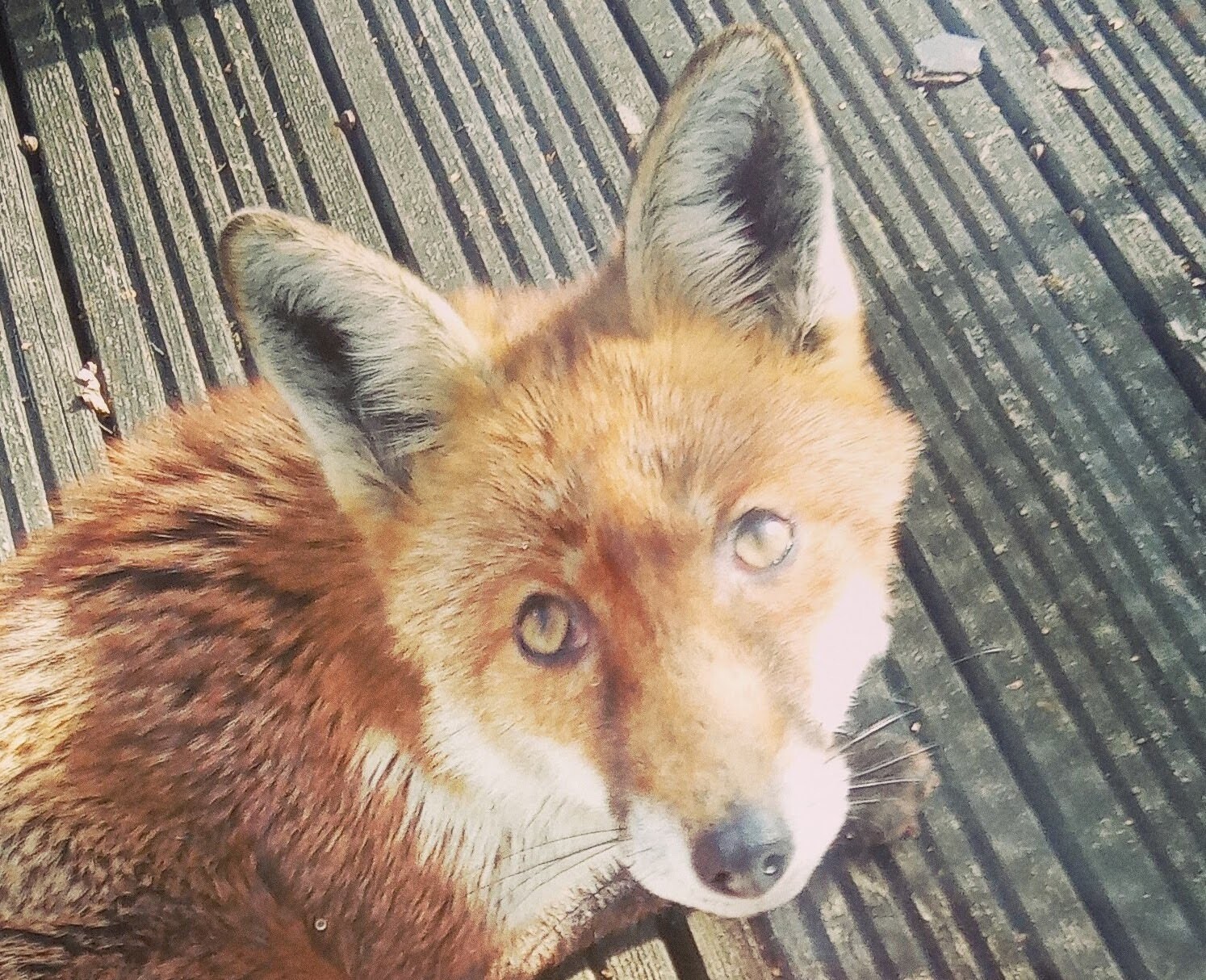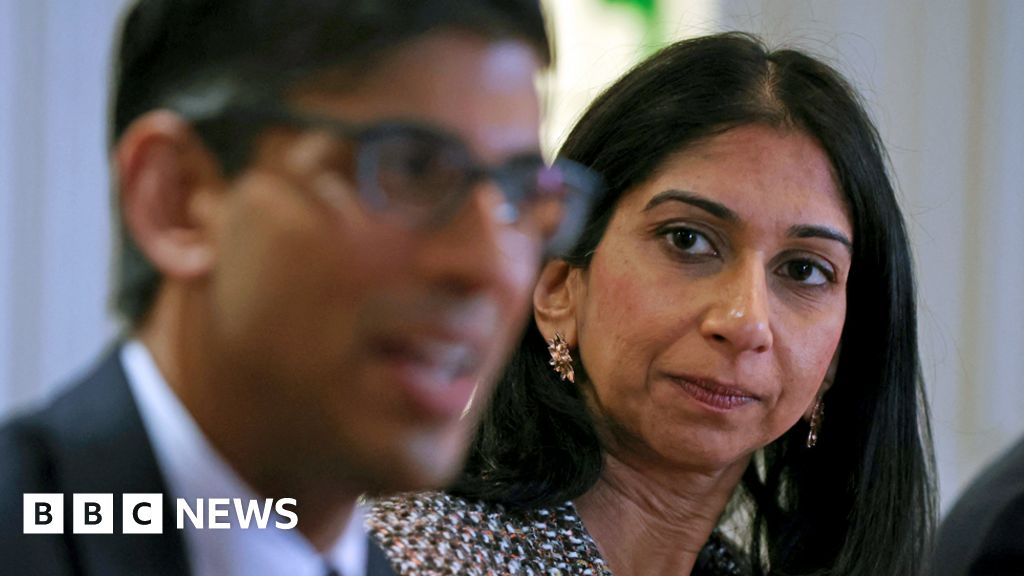Beta testing Stad.social
- 149 Posts
- 125 Comments
 11·10 months ago
11·10 months agoExcept if they were it’d be well known, and no startup typically has contracts that doesn’t involve approvals for secondary sales at this kind of early stage because increasing the number of people on the cap table enough triggers nearly the same reporting requirements as being public, and is a massive burden. Just doesn’t work that way.
It’s also hilarious that you take posting an article that is at best neutral, with a message of doom and gloom about risks to their business, on Lemmy is something OpenAI would have any interest in. If I wanted to pump OpenAI there are better places to do it, and more positive spins to put on it.
 11·10 months ago
11·10 months agoLol, what. OpenAI shares aren’t available - there’d be no benefit to anyone trying to pump them.
 21·10 months ago
21·10 months agoYou can’t really trust anything a human says because we’re frequently wrong yet convinced we’re right, or not nearly as competent as we think, yet we manage, because in a whole lot of endeavours being right often enough and being able to verify answers is sufficient.
There are plenty of situations where they are “right enough” and/or where checking the output is trivial enough. E.g. for software development, where I can easily tell if the output is “right enough”, and where humans are often wrong, and where we rely on tests to verify correctness anyway.
Having to cross-check results is a nuisance, but when I can e.g. run things past it on subjects I know well enough to tell if the answers are bullshit and where it can often produce answers better than a lot of actual software developers, it’s worth it. E.g. I recently had it give me a refresher on the algorithms to convert an Non-deterministic finite automata (NFA) to a deterministic finite automata (DFA) and it explained it perfectly (which is not a surprise; there will be plenty of material on that subject), but unlike if I’d just looked it up in google, I could also construct examples to test that I remembered it right and have it produce the expected output (which, yes, I verified was correct).
I also regularly has it write full functions. I have a web application where it has written ca 80% of the code without intervention from me. Plenty of my libraries now have functions it has written.
I use it regularly. It’s saving me more than enough time to justify both the subscription to ChatGPT and API fees for other use.
As such, it is “actually useful” for me, and for many others.
 21·10 months ago
21·10 months agoBubble in the sense that “many companies will fail” we can agree on. Companies like OpenAI will survive - lawsuits or not - and even if they were to fail due to the lawsuits the algorithms are known and e.g. Microsoft, who has a license to the tech would just hire the team and start over and let the corporate entity go bankrupt.
But all of the “ChatGPT for field X” companies that are just razor-thin layers on top of OpenAI’s API, sure, they will almost all fail, and the only ones of them that won’t will be the ones that leverages initial investment into an opportunity to quickly pivot into something more substantial.
A lot of people talk about AI as a bubble in the sense of believing the tech will go away, though, and that will never happen, because it’s useful enough.
Regarding OpenAI’s market cap, I don’t agree - I think it’ll increase far more, unless they massively misstep, because even though it’s riding high on hype, they also still have big lead not down to their hype but down to actually being significantly ahead of even competitors like Google, and given the high P/E ratios in tech they don’t need to be the backend all that many big deployments behind big companies even just to field really stupid-simple uses that don’t really need the capabilities of GPT before they’ll justify that valuation.
 53·10 months ago
53·10 months agoWhenever I see them described as “plagiarism machines”, odds are about 99% that the person using the term have no idea how these models work. Like with humans, they can overfit, but most of what they output will have have far less in common with any individual work than levels of imitations people engage in without being accused of plagiarism all the time.
As for the environmental effects, it’s a totally ridiculous claim - the GPUs used to train even the top of the line ChatGPT models adds up to a tiny rounding error of the power use of even middling online games, and training has only gotten more efficient since.
E.g. researchers at Oak Ridge National Labs published a paper in December after having trained a GPT4 scale model with only 3k GPUs on the Frontier supercomputer using Megatron-DeepSpeed. 3k GPUs is about 8% of Frontiers capacity, and while Frontier is currently fastest, there are hundreds of supercomputers at that kind of scale publicly known about, and many more that are not. Never mind the many millions of GPUs not part of any supercomputer.
 51·10 months ago
51·10 months agoYou can’t. The cat is out of the bag. The algorithms are well understood, and new papers on ways to improve output of far smaller models come out every day. It’s just a question of time before training competitive models will be doable for companies in a whole range of jurisdictions entirely unlikely to care.
 22·10 months ago
22·10 months agoWhy do you think anything will “burst”? If anything, if licensing requirements for contents makes training expensive it’s likely to make the biggest existing players far more valuable.
 5·10 months ago
5·10 months agoPossibly. On the other hand, OpenAI’s market cap is bigger than the ten largest publishers combined - despite their whining they can afford to. It’s not OpenAI that will be prevented from getting training data - the biggest impact will be that it might stop smaller competitors and prevent open-source models.

 1·1 year ago
1·1 year agoSeems better behaved than many commuters I’ve run into.

 1·1 year ago
1·1 year agoI feel like you are one of the people who feel that AI is just going to be the future with no real problems to anyone who matters. We can’t stop it, we can’t regulate it in any way whatever; and people should just move out of the way, give up and if they can’t find a place in the new world, die already. Artists don’t matter, writers don’t matter and anyone impacted by this new system doesn’t matter. The algorithm is all that matters.
If I thought that, I wouldn’t have emphasised the need to sort out the funding issue, and argued that just regulation will be insufficient to solve it.
I think it will cause a massive degree of upheaval. I don’t think regulation has any hope in hell of preventing upheaval significant enough that unless a solution is found to ensure better distribution of wealth it will cause violence and uprisings and governments to fall. Not necessarily in and of itself, but in accelerating a process of reducing the monetary value of labour.
I can’t know anything about LLMs, machine learning or anything about this.
I’ve not suggested anything of the sort.
How you can interpret anything I’ve written as suggesting I don’t think there will be problems is beyond me.
You therefore throw out the idea that bias exists due to tagging systems.
I’ve done no such thing.

 1·1 year ago
1·1 year agoQuick iteration is definitely the big thing. (The eye is fun because it’s so “badly designed” - we’re stuck in a local maxima that just happens to be “good enough” for us to not overcome the big glaring problems)
And yes, if all the inputs are corrupted, the output will likely be too. But 1) they won’t all be, and as long as there’s a good mix that will “teach” the network over time that the difference between a “corrupted cat” and an “uncorrupted cat” are irrelevant, because both will have most of the same labels associated with them. 2) these tools work by introducing corruption that humans aren’t meant to notice, so if the output has the same kind of corruption it doesn’t matter. It only matters to the extent the network “miscorrupts” the output in ways we do notice enough so that it becomes a cost drag on training to train it out.
But you can improve on that pretty much with feedback: Train a small network to recognize corruption, and then feed corrupted images back in as negative examples to teach it that those specific things are particularly bad.
Picking up and labelling small sample sets of types of corruption humans will notice is pretty much the worst case realistic effect these tools will end up having. But each such countermeasure will contribute to training sets that make further corruption progressively harder. Ultimately these tools are strictly limited because they can’t introduce anything that makes the images uglier to humans, and so you “just” need to teach the models more about the limits of human vision, and in the long run that will benefit the models in any case.

 1·1 year ago
1·1 year agoSo what you are saying is open ai should get the public grants for artists to give to artists?
No. What in the world gave you that idea? I’m saying artists or companies employing artists should get grants, just like is the case for a large number of grants now. I’m saying I’d like to see more of that to compensate for the effects being liberal about copyright would have.
I understand it isn’t trained for anything, I have done training with them. The training leads to homogeneous outcomes. It had been studied as well. You can look it up.
There is no “the training”. There are a huge range of models trained with different intent producing a wide variety in output to the point that some produces output that others will just plain refuse.
Dall-e 3 still isn’t good enough to be competitive.
Dall-E 3 isn’t anywhere near leading edge of diffusion models. It’s OpenAI playing catch up. Now, neither Midjourney or Firefly, nor any of the plethora of Stable Diffusion derived models are good enough to be competitive with everyone without significant effort either, today, but that is also entirely irrelevant. Diffusion models are two years old, and the pace of the progress have been staggering, to the point where we e.g. already have had plenty of book-covers and the like using them. Part of the reason for that is that you can continue training of a decent diffusion model even on a a somewhat beefy home machine and get a model that fits your needs better to an extent you can’t yet do with LLMs.
Asking and crediting would go a long way to help fix the financial challenge. Because it is a start to adding a financial component. If you have to credit someone there becomes an obligation to that person.
If there is a chance crediting someone will lead to a financial obligation, people will very quickly do the math on how cheaply they can buy works for hire instead. And the vast bulk of this is a one-off cost. You don’t need to continue adding images to teach the models already known thing, so the potential payout on the basis of creating some sort of obligation. Any plan for fixing the financial challenge that hinges on copyright is a lost cause from the start because unless it’s a pittance it creates an inherent incentive for AI companies to buy themselves out of that obligation instead. It won’t be expensive.

 1·1 year ago
1·1 year agoI don’t see these grants or public funding ever covering a private company for one.
Companies are by far the largest recipients of public funding for art in many countries and sectors. Especially for e.g. movie production in smaller languages, but also in other sectors.
And for two, I don’t see AI art ever actually getting to the point where it fully replaces artists.
I do agree it won’t fully replace artists, but not because it won’t get to the point where it can be better than everyone, but because a huge part of art is provenance. A “better Mona Lisa” isn’t worth anything, while the original is priceless, not because a “better” one isn’t possible, but because it’s not painted by Da Vinci.
But that will only help an even narrower sliver than the artists who are making good money today.
It will take time, but AI will eat far more fields than art, and we haven’t even started to see the fallout yet.
Because it is trained to make a homogeneous rendering of what you are looking for
Diffusion models are not trained “for” anything other than matching vectors to denoising to within your own tolerance levels of matching to what you are looking for. Accordingly, you’ll see a whole swathe of models tuned on more specific types of imagery, and tooling to more precisely control what they generate. The “basic” web interfaces are just scratching the surface of what you can do with e.g. Controlnet and the like. It will take time before they get good enough, sure. They are also only 2 years old, and people have only been working on tooling around then for much less than that.
Open AI might be sitting on Microsoft money, but how many other companies has Microsoft gobbled up over the years? Open AI if it starts to struggle will just fall under the Microsoft umbrella and become part of its massive conglomerate, integrated into it. Where are our AR goggles that we are supposed to all be wearing, Microsoft and Google both had those? So many projects grow and die with multiple millions thrown at them. All end up with crazy valuations based on future consumer usage. As we all can’t even afford rent.
OpenAI is just one of many in this space already. They are in the lead for LLMs, that is text-based models. But even that lead is rapidly eroding. They don’t have any obvious lead for diffusion models for images. Having used several, it was first with the recent release of DallE 3 that it got “good enough” to be competitive.
At the same time there are now open models getting close enough to be useful, so even if every AI startup in the world collapsed this won’t go away.
There is also this idea that people wouldn’t willing contribute if just asked.
That’s fine, but that doesn’t fix the financial challenge.

 5·1 year ago
5·1 year agoIt doesn’t need to “develop its own style”. That’s the point. The more examples of these adversarial images are in the training set, the better it will learn to disregard the adversarial modifications, and still learn the same style. As much as you might want to stop it from learning a given style, as long as the style can be seen, it can be copied - both by humans and AI’s.

 32·1 year ago
32·1 year agoAs long as people aren’t ready for it, then it doesn’t solve the immediate problem that needs to be solved today.

 1·1 year ago
1·1 year agoIf you work on commission only online, or never went to art school those won’t cover you.
There’s no reason it has to stay like that. And most people in that position are not making a living from art as it is; expanding public funding to cover a large proportion of working artists at a better level than today would cost a pittance.
These large tech companies become so highly valued at the start because of venture capital and then in 5-10 years collapse under their own weight. How many of these have come up and are now close to drowning after pushing out all competitors? Sorry if I’m not excited about an infusion of cash into a large for profit company that is just gobbling up anything anyone posts online without consent to make a quick buck.
MS, Apple, Meta, Google etc. are massively profitable. OpenAI is not, but sitting on a huge hoard of Microsoft cash. It doesn’t matter that many are close to drowning. The point is the amount of cash floating around that enable the big tech companies to outright buy more than enough content if they have to means that regulation to prevent them from gobbling up anything anyone posts online without consent will not stop them. So that isn’t a solution. It will stop new entrants with little cash, but not the big ones. And even OpenAI can afford to buy up some of the largest content owners in the world.
The point was not to make you excited about that, but to illustrate that fighting a battle to restrict what they can train on is fighting a battle that the big AI companies won’t care if they lose - they might even be better off if they lose, because if they lose, while they’ll need to pay more money to buy content, they won’t have competition from open models or new startups for a while.
So we need to find other solutions, because whether or not we regulate copyright to training data, these models will continue to improve. The cat is out of the bag, and the computational cost to improving these models keeps dropping. We’re also just a few years away from people being able to train models competitive to present-day models on computers within reach of hobbyists, so even if we were to ban these models outright artists will soon compete with output from them anyway, no matter the legality.
Focusing on the copyright issue is a distraction from focusing on ensuring there is funding for art. One presumes the survival of only one specific model that doesn’t really work very well even today and which is set to fail irrespective of regulation, while the latter opens up the conversation to a much broader set of options and has at least a chance of providing working possibilities.

 51·1 year ago
51·1 year agoI live in the UK and I don’t drink beer because I generally, ironically, think beer overall tastes like piss, and yet I still know Tsingtao. It has fairly substantial market recognition in a lot of countries.

 2·1 year ago
2·1 year agoI doesn’t need to be full on UBI. In a lot of countries grants mechanisms and public purchasing mechanisms for art already make up a significant proportion of income for artists. Especially in smaller countries, this is very common (more so for literary works, movies and music where language provides a significant barrier to accessing a bigger audience, but for other art too). Imagine perhaps a tax/compulsory licensing mechanism that doesn’t stop AI training but instead massively expands those funding sources for people whose data are included in training sets.
This is not stoppable, not least because it’s “too cheap” to buy content outright.
I pointed out elsewhere that e.g. OpenAI could buy all of Getty Images for ~2% of their currently estimated market cap based on a rumoured recent cash infusion. Financing vast amounts of works for hire just creates a moat for smaller players while the big players will still be able to keep improving their models.
As such it will do nothing to protect established artists, so we need expansion of ways to fund artists whether or not inclusion of copyrighted works in training sets becomes restricted.

 1·1 year ago
1·1 year agoYou wouldn’t want to. If you just feed it to the models, then if there are enough of these images to matter the model will learn to ignore the differences. You very specifically don’t want to prevent the model from learning to overcome these things, exactly because if you do you’re stuck with workarounds like that forever, but if you don’t the model will just become more robust to noisy data like this.







The age matters less than the power-dynamics of her being his nanny.